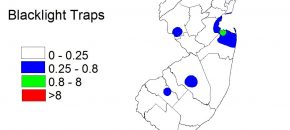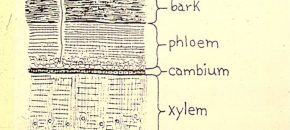On Sunday, June 27, there will be a free COVID-19 vaccination event during a rodeo being held at the Surf Stadium (545 North Albany Ave, Atlantic City). No appointments are needed and walk-ups are welcome. Both Pfizer for those ages 12 and older (1st and 2nd doses) and J&J for those 18 and older will […]
Continue reading...New Jersey Farmland Preservation Seeking New Applications for State Acquisition Program
New Jersey Secretary of Agriculture Douglas H. Fisher recently announced that the New Jersey Farmland Preservation Program is accepting new applications for farm owners wishing to permanently preserve their land. The State Agriculture Development Committee (SADC), the agency that administers the program, is accepting new applications through its State Acquisition Program in which landowners coordinate […]
Continue reading...Vegetable IPM Update 6/23/21

Sweet Corn European corn borer (ECB) moth catches remain very low, and concentrated primarily in Gloucester County (see map below at right). Most active infestations now are in pre-tassel stage corn, with whorl corn largely free of feeding as egg laying has declined. Feeding in scouted pre-tassel stage sweet corn ranges to above 30% in […]
Continue reading...Some Key Soft Scale Pests in the Landscape

Soft Scale Species Controls (June & July): Compared to armored scales, the soft scales are relatively easy to suppress with either contact sprays or systemic treatments. Some of the common landscape soft scale species in NJ include calico, Fletcher, Indian wax, cottony maple, cottony camellia, spruce bud, European fruit lecanium, pine tortoise, striped pine, magnolia, […]
Continue reading...COVID Delta Variant and NJ Agriculture
As the farming season progresses so does concern for the increased prevalence of the COVID Delta variant in the region. We asked Don Schaffner, Extension Specialist, about the Delta variant and if we should be concerned about it. If you or your farm workers are in need of a vaccine please email njfarmvax@njaes.rutgers.edu and an […]
Continue reading...Vegetable Disease Update – 6/22/21
Cucurbit downy mildew has been reported on cucumber (6/16/21) and cantaloupe (6/22/21) in southern New Jersey. For more information on CDM and its control please click here. To track the progress of CDM please visit the CDM forecasting website. No reports of Late blight in the region. To track the progress of Late blight in […]
Continue reading...